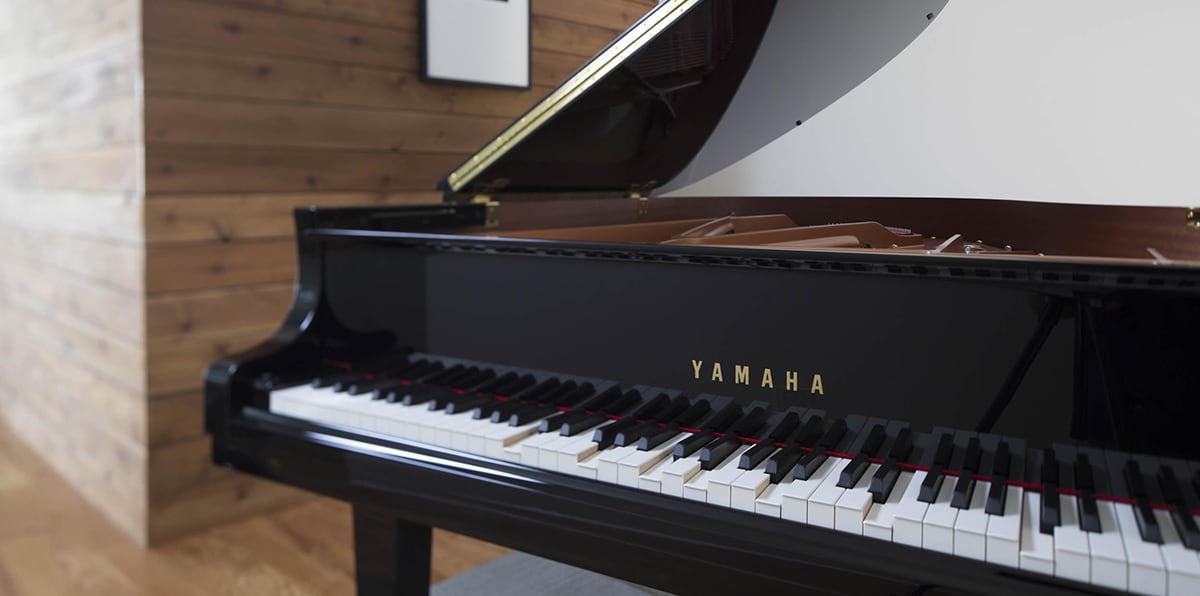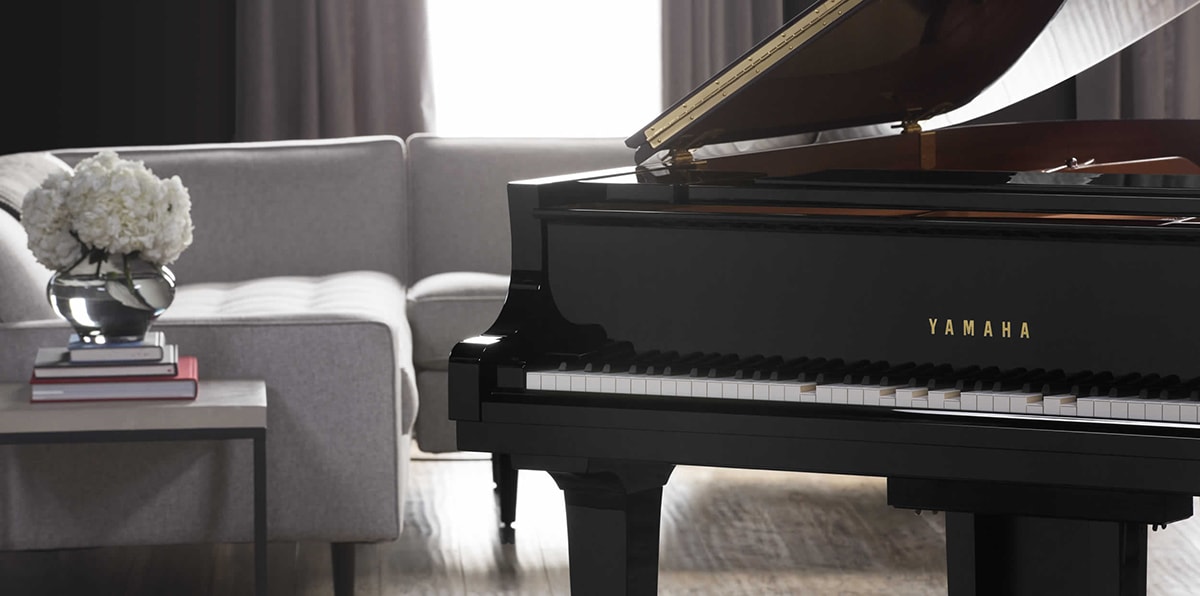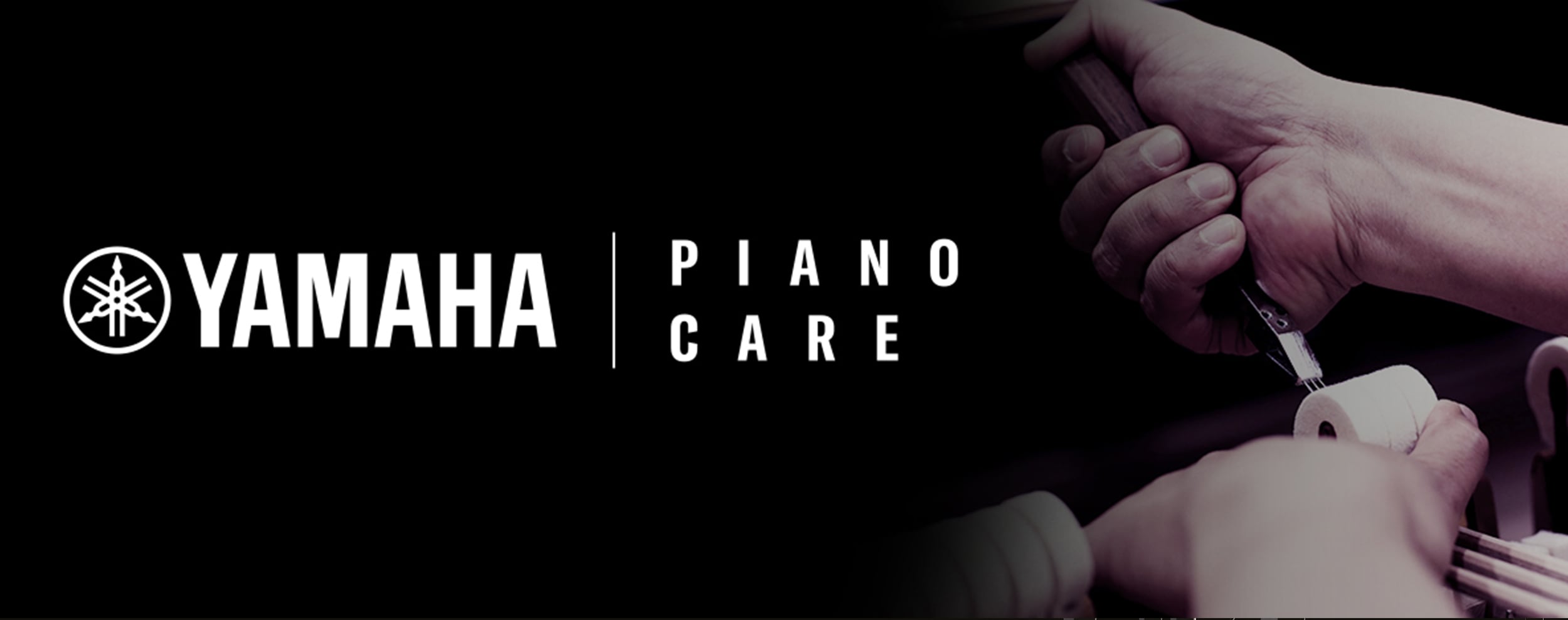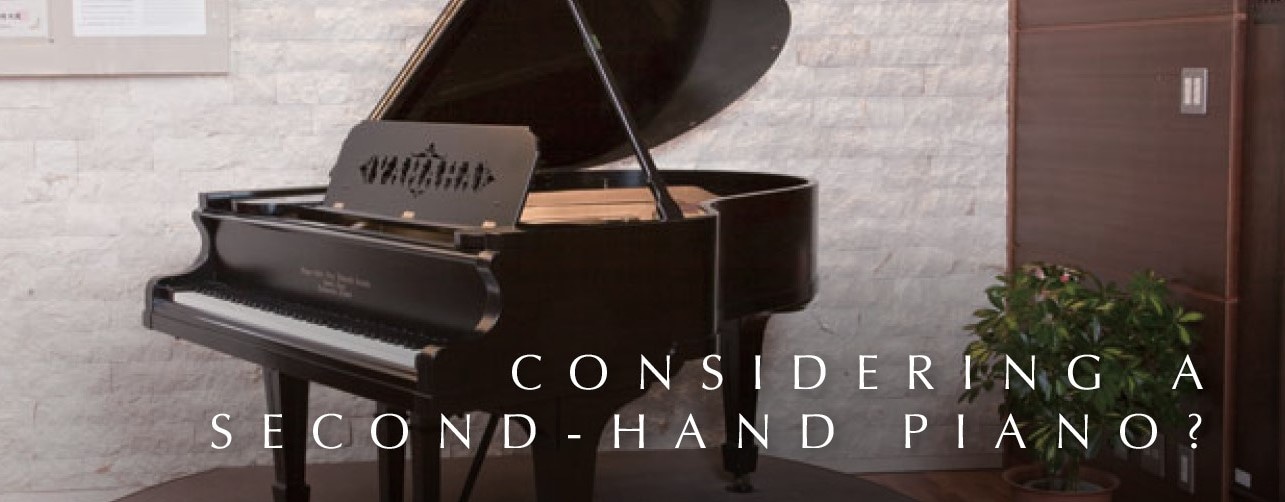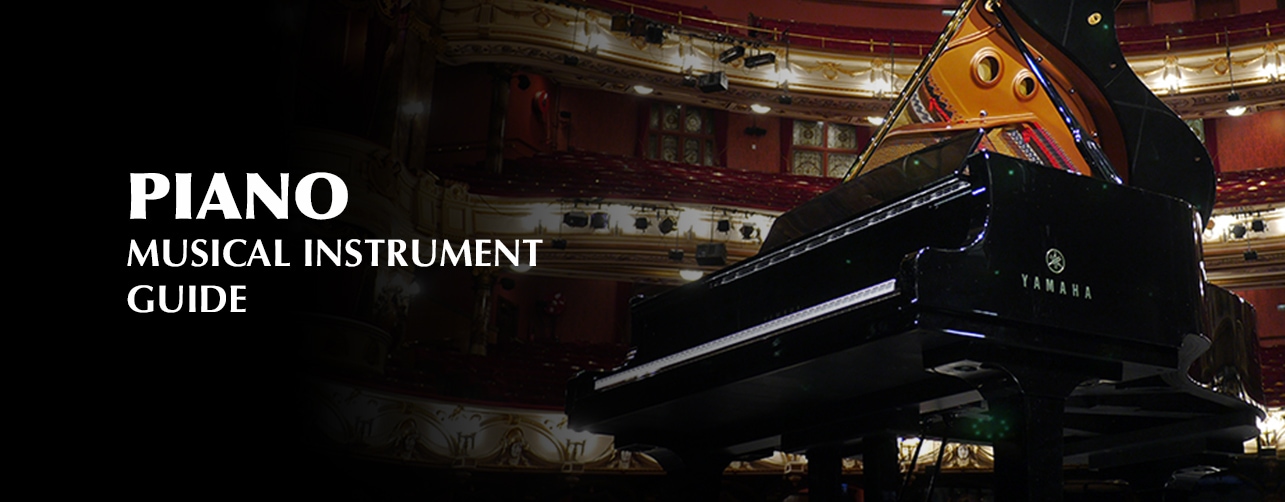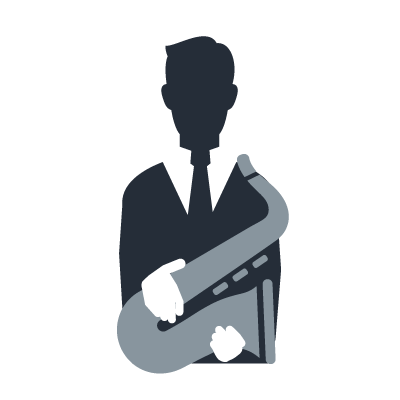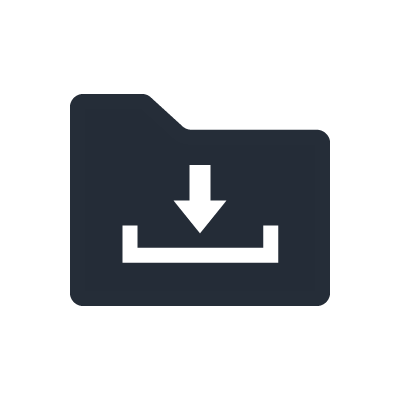THE INTERSECTION OF ARTISTRY,
CRAFTMANSHIP & TECHNOLOGY.

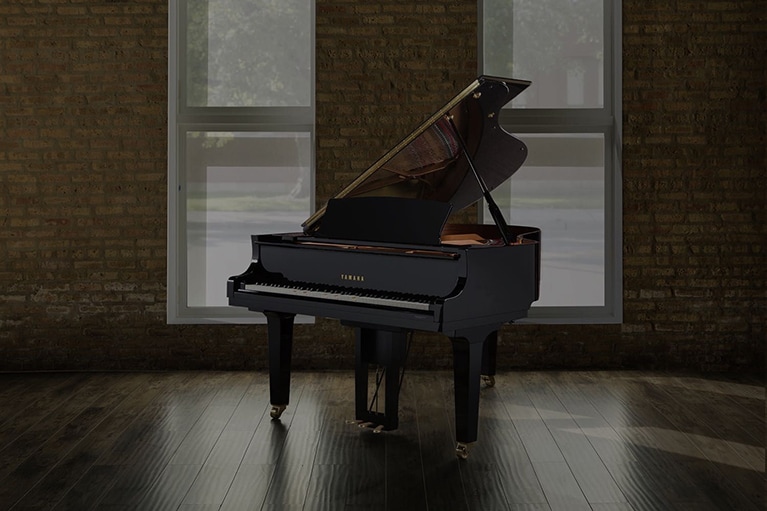
THOUSANDS OF PERFORMANCES IN ONE MASTERPIECE
The Disklavier boasts thousands of songs; making it the largest collection of any player piano.

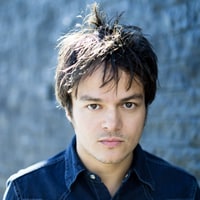

INSPIRED ENGINEERING
Over 25 years of continuous development has led to superior recording and playback features that are unparalleled in the industry.
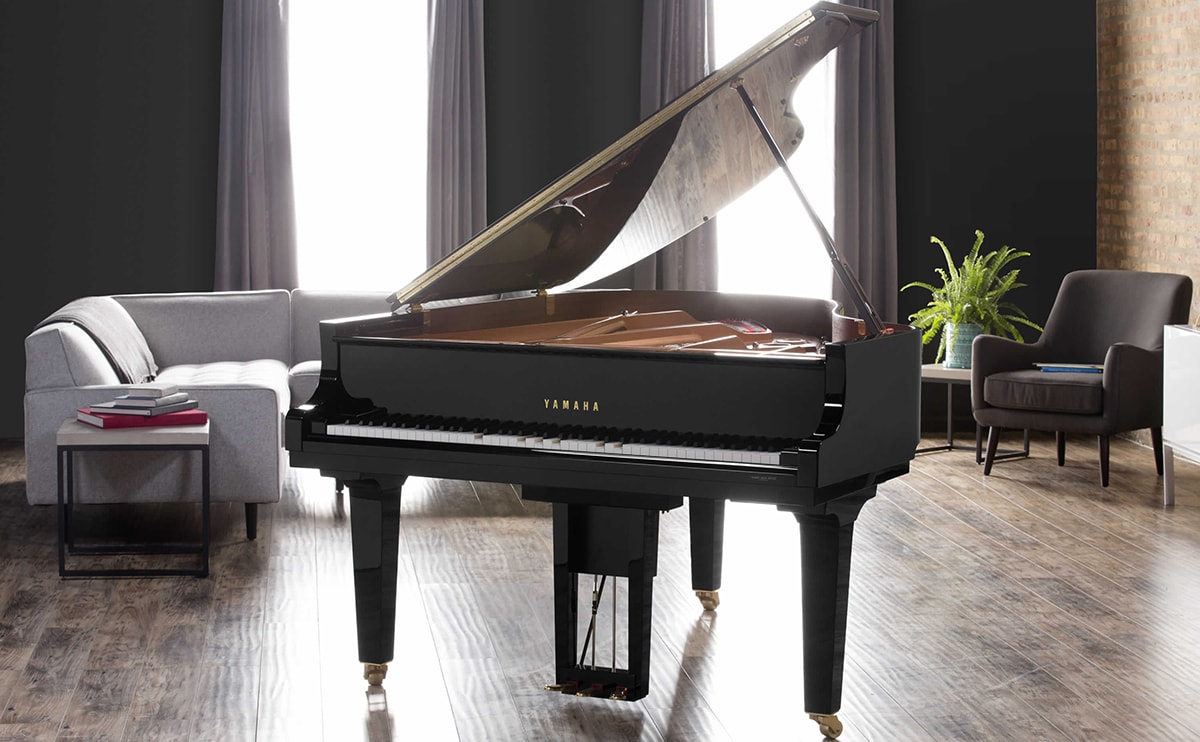
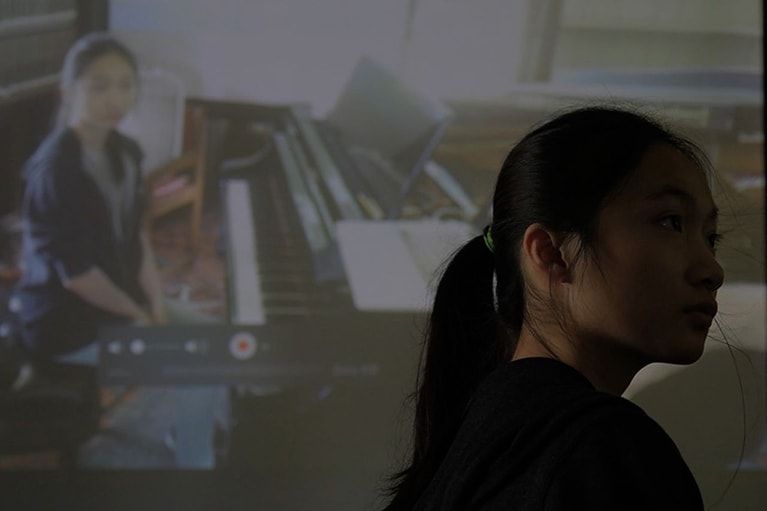
SEE &
BE HEARD
Technology that allows video to be played in unison with the Disklavier.

EFFORTLESS
INTEGRATION
Seamless compatibility with mobile devices allows control wherever you are.
ARTISTIC EXCELLENCE IN YOUR LIVING ROOM
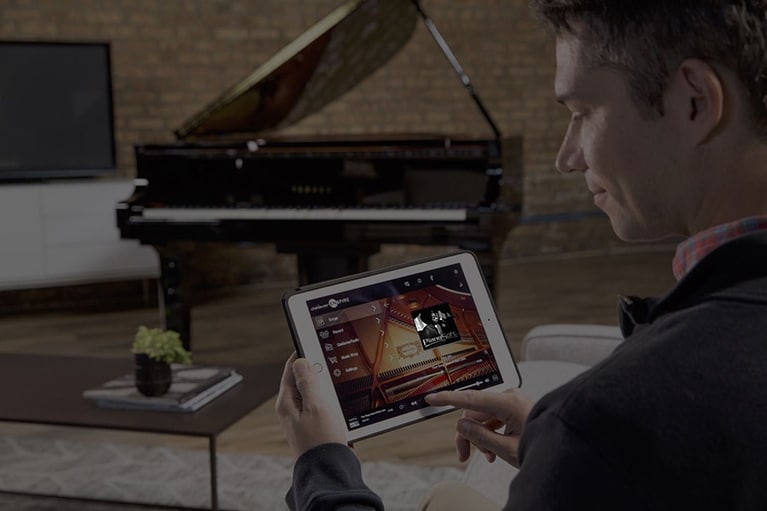
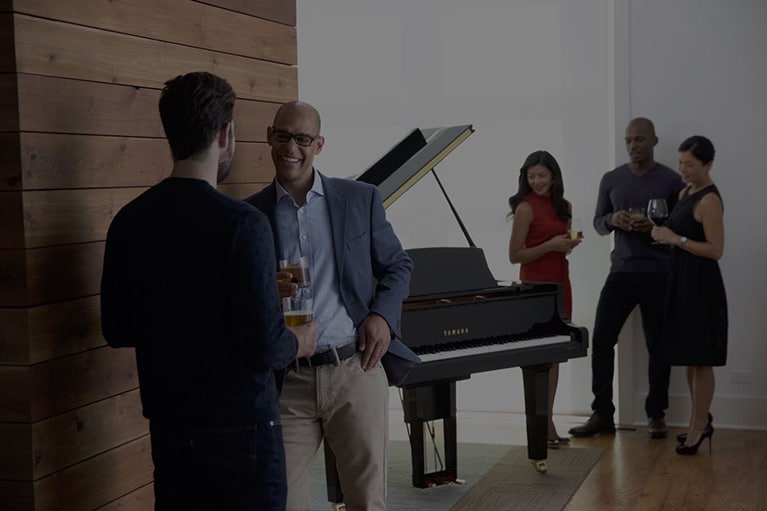
and put your entertainment on auto-pilot.
Discover the Disklavier Home
The Disklavier breathes new life into your home entertainment experience.
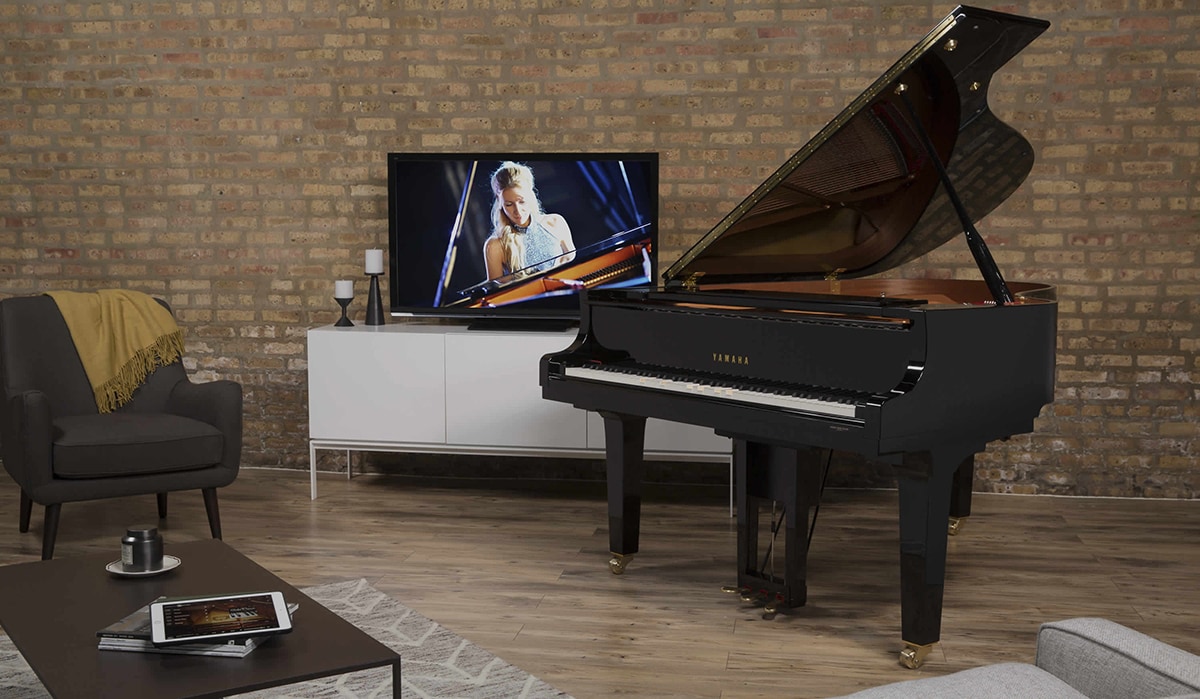
More Than a Player Piano
In addition to unrivaled performance reproduction, the Disklavier offers what other systems simply cannot.
Expressive and Elegant
For over 100 years, Yamaha pianos have been revered for their beauty and musical range.
Every Note, Every Nuance
The Disklavier recreates a precise portrayal of the artist's intentions.
The Sound of Innovation
Integrated SILENT Piano™ technology allows you to listen, learn and play without being disturbed or disturbing others.
The Center of Attention
A piano that is the perfect experiential centerpiece for any environment.
For the Love of Music
Enjoy beautiful piano solos or piano ensemble performances, fully enhanced by vocals and backing instrumentation.
You're in Control
Intuitive controls put your favorite piano performances in the palm of your hand.
BUILT FOR THE STUDENT.
The Disklavier was originally conceived and crafted as a tool to empower music education.
Improve learning with visual masterclasses, piano performance analytics, distance learning and more.
- 1024
- levels of key velocity
- UNLIMITED
- POTENTIAL
- 256
- increments of positional pedaling
The Remote Masterclass
The modern music institution can provide top tier artists and educators a platform to host a masterclass from around the globe.
Playback Meets Precision
The Disklavier is the only reproducing piano that incorporates a fully-integrated record and playback system.
On-Demand Accompaniment
Create your own accompaniment or select from readily available titles from our catalog.
Artistic Versatility
Whether the student is center stage playing a senior recital, or a world-renowned artist is giving a concert; the Disklavier redefines performance expectations.
Distance Learning
Remove geographic boundaries from the learning experience.
Remote Auditions
Empower students to audition anywhere around the world, making music education more accessible.
Explore a Disklavier Institution
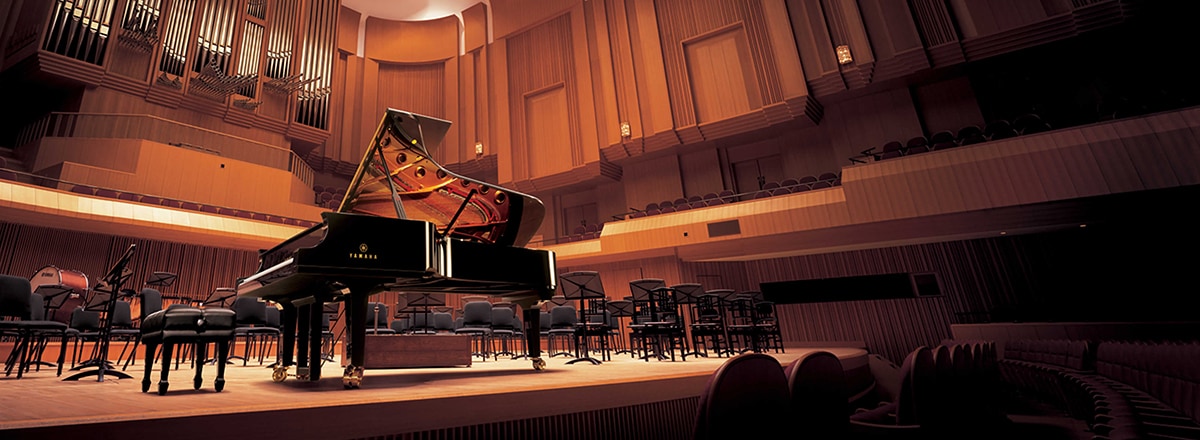
- “TEACHING PIANO USING THE YAMAHA DISKLAVIER HAS ALLOWED ME TO CONNECT WITH MUSICIANS I WOULD HAVE OTHERWISE BEEN UNABLE TO ENCOUNTER. TO BE ABLE TO HEAR THE PERFORMANCE OF A STUDENT WHO IS PHYSICALLY MILES AWAY THROUGH AN ACOUSTIC PIANO, REPRODUCED WITH PERFECT ACCURACY, ALLOWS US TO COMMUNICATE WITH A NATURALNESS SO RARE IN MOST DISTANCE LEARNING TECHNOLOGY. THE YAMAHA REMOTE LESSON IS TECHNOLOGY AT ITS MOST HUMAN.”
- LISA YUI, PIANO AND KEYBOARD FACULTY, MANHATTAN SCHOOL OF MUSIC.
- “THIS EXTRAORDINARY TECHNOLOGY WHICH YAMAHA HAS, REMOTE LESSON, WHERE I CAN SIT HERE AND PLAY A PIANO AND ANOTHER REMOTE, ANOTHER DISKLAVIER ANYWHERE IN THE WORLD CAN REPEAT THAT PERFORMANCE EXACTLY, WITH NOT A MICROPHONE SOUND, WITH A SOUND EXACTLY AS I’M PLAYING IT. WHICH IS QUITE EXTRAORDINARY”
- BYRON JANIS, LEGENDARY PIANIST AND PRESIDENTIAL ADVISOR, YAMAHA MUSIC AND WELLNESS INSTITUTE
YOUR BUSINESS STANDS OUT.
Put Your Customers in the Right State of Mind.
Wellness
From hospitals, wellness centers and nursing homes - the Disklavier provides the comfort of a professional pianist on-demand.
Churches
A church accompanist 24/7 to make your music rehearsals more productive and to enhance your worship service.
Recording Facilities
Enhancing the ability to create and capture in the studio.
Restaurants & Venues
Outshine the competition by providing live entertainment from a vast selection of repertoire.
Resorts & Hotels
Perfect for the lobby, greeting guests with piano music as they arrive.
Retail
Optimize the high-end shopping experience.
- OVER 30
- channels of streaming piano music available 24/7.
- MORE THAN 6000
- titles in our music catalog.
Discover The Disklavier For Businesses.
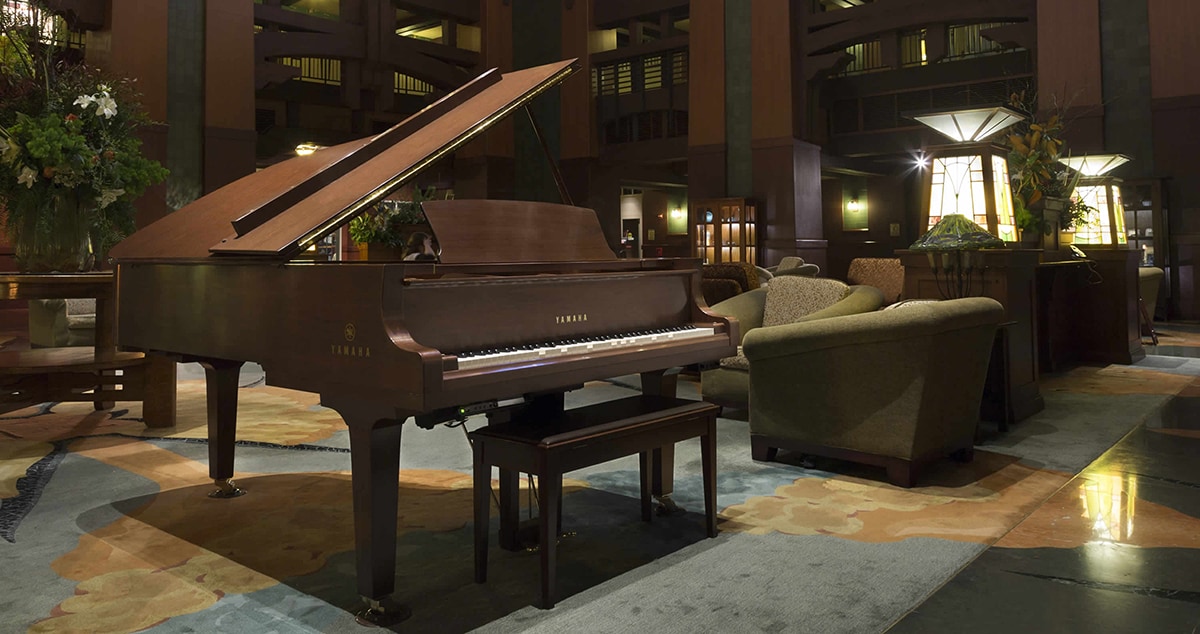
YOUR
PERFORMANCE.
OPTIMIZED.
- The Most COMMERCIALLY RECORDED
- instruments in the world.
- The Most PERFORMED ON
- instruments in the world.
Discover the Disklavier for the Artist
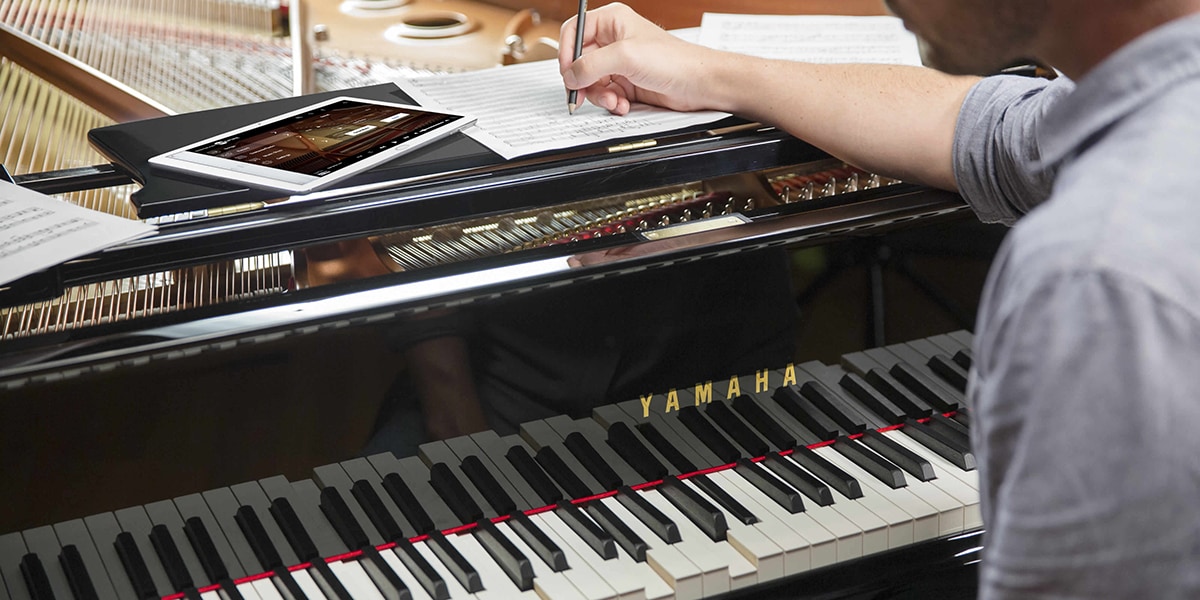
SONIC SYNERGY
The Disklavier can be easily integrated into professional and home studios, or used as a standalone music production instrument.
AN INSTRUMENTAL INSTRUMENT
Share piano recordings with other Disklavier users and take musical collaborations, rehearsals and writing sessions to another level.
Ultimate Flexibility
A music tool for musicians, Disklavier offers a wide range of uses for performers, composers and recording engineers.
Express Yourself
From the touch, to the tone, to the projection - Yamaha pianos are designed to be an extension of you.
Boost Productivity
Ultra-accurate performance reproduction makes studio time more productive, giving the artist more time to record and the engineer more flexibility to find the sweet spot.
Spark Creativity
Create when the pianist is there and when they aren't. With Disklavier you never have to stop the musical ideas from flowing.
Integrate & Connect
MIDI and audio connectivity give artists more flexibility to compose, capture and collaborate.
Not Just The Piano
The Disklavier can generate digital sounds or can be used as a keyboard controller so you can find even more inspiration exploring a full palette of instruments.
Evaluate & Evolve
Record and critique your own performances. Disklavier gives artists the tools to grow and evolve into better musicians.
- "WITH DISKLAVIER, YAMAHA HAS SUCCEEDED IN DEVELOPING AN INCREDIBLE SOFTWARE AND HARDWARE TECHNOLOGY AT THE SERVICE OF ARTISTIC EXPRESSION."
- FREDERIC CHIU
- "IT’S CRAZY TO THINK THAT THE NOTES I’M ACTUALLY PLAYING CAN IMPACT THE FUTURE OF MUSIC...THAT A LITTLE KID, SITTING IN THEIR LIVING ROOM, CAN PUT THEIR HANDS ON THE PIANO AND FEEL THE KEYS MOVE UP AND DOWN...AND EXPERIENCE THE EXACT INTENTION OF WHAT THAT SONG MEANS TO ME. TO SHARE IN THOSE MOMENTS, TO INFLUENCE AND INSPIRE...FOR ME, THERE IS NO GREATER REWARD."
- JON MCLAUGHLIN
HISTORY OF THE DISKLAVIER
The history of the piano is a history of technological change and innovation, starting over 300 years ago with the escapement action of Bartolomeo Cristofori and continuing with knee levers, pedals, action modifications, cast iron frame, and so much more. This dynamic history has been the result of the passionate interaction between keyboard players, composers, and instrument makers.
In the 1970s, solenoid-based player systems were added to pianos for the first time. In 1987, Yamaha took that concept to a new level of quality and ease of use by introducing the Disklavier reproducing piano to North America.
The term Disklavier is a clever combination of the words disk (as in floppy disk) and Klavier, the German word for keyboard. At the time that the Disklavier was introduced, recordings were stored on 3 ½ inch floppy disks.
The Disklavier is fundamentally a traditional, acoustic piano with a built-in record-and-playback system. The record-and-playback system and its related features have changed substantially over the years, but one aspect of the Disklavier has remained constant: The Disklavier system has always been offered as a factory-installed system—never as a retrofit for existing pianos.
MX100A and MX100B
The first model Disklavier was the MX100A, which was available in a studio model upright called the U1. The control unit was built into the cabinet.
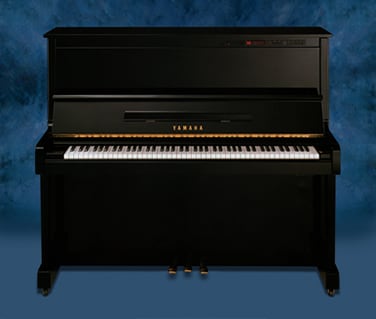
MX100A PEThe MX100A featured a remarkably sophisticated recording system for its day, a system that included hammer sensors—an innovation that is not available on most player piano systems from other companies. Pedal sensors on these early instruments, however, were limited to recording only two values: on and off (or fully down and fully up).
This early Disklavier model included fundamental features that have been included on every Disklavier since, such as tempo control, transposition, and connectivity with external MIDI devices.
In a short period of time, the MX100A was superseded by the MX100B. The most noticeable difference was the color of the LED display on the control unit, which was changed from red to green.
Both the MX100A and the MX100B pre-dated the industry-standard song file format known as Standard MIDI Files (SMF), which is the format used today. For this reason, these early Disklaviers recorded in Yamaha’s proprietary MIDI format known as E-SEQ. Although modern Disklaviers do not record in E-SEQ format, they will read this older type of song file and even convert E-SEQ to SMF. E-SEQ song files were stored on double-density (DD) 3 ½ inch floppy disks.
Wagon Grand
Starting in 1989, Yamaha began marketing the Disklavier system in the various grand piano models that were available at the time. The control unit had a rather substantial power supply that required it to be housed in a 30” cabinet on wheels that was often referred to as a wagon. Lacking a more formal model designation, these instruments became informally known as Wagon Grand Disklaviers.
Like the MX100A&B, the Wagon Grand featured hammer sensors. It also featured 16 increments of incremental pedal recording—an important step forward in the evolution of the instrument. Like the MX100A&B, the Wagon Grand recorded on DD floppy disks in E-SEQ format.

Mark II and Mark IIXG
A number of consumer and standard models of Disklavier were introduced in the early-to-mid 1990s. Most noteworthy were the Mark II and Mark IIXG systems. These were available in the studio model, U1 upright and in most sizes of grand pianos.
The first of these was the Mark II, which made its debut in 1990. In the case of the upright version, the control unit was built into the cabinet, as it was in the case of the MX100A&B. The control unit, however, was much more sophisticated, offering many more options for copying song files, MIDI configuration, and so forth. The instrument recorded on DD floppy disks in E-SEQ format but was able to play song files in the SMF format known as Type 0.
The Mark II control unit for grand pianos did not have a wagon control unit. Instead, a relatively small control unit was devised for this instrument and mounted under the keys.
The Mark IIXG followed the Mark II in 1992. Its control unit was a bit smaller but was packed with many new features, including:
- Built-in tone generator with 128 General MIDI (GM) voices with drum kit as well as Yamaha’s extended GM voice set known as XG.
- Multi-track recording.
- Recording in SMF Type 0 format.
- Playback of both SMF Type 0 and Type 1 song files.
- Support for both DD and HD (high density) floppy disks
- Conversion of song files between E-SEQ and SMF
- Built-in memory for storing song files.
- More features for song file management.
- Improved support for MIDI interaction with computers.
- Support for future firmware upgrades.
During the 1990s, it was possible to obtain an upgrade kit that would upgrade a Mark II to a Mark IIXG.
Disklaviers with Silent Systems
During the era of the Mark II and the Mark IIXG, a number of upright (U1) versions of the Disklavier were introduced that had a Silent system. The Silent system provided a mute rail which, when engaged, would allow a full keystroke but would prevent the hammer from hitting the string. This made it possible for the pianist to play the instrument with headphones on, listening to an advanced digital piano sample.
The Silent system was not available in grand piano models until the Disklavier PRO was released.
Disklavier PRO
The year 1998 marked an important historical moment in the evolution of the Disklavier. The new PRO Disklavier—with a Mark IIXG control unit—offered unprecedented recording accuracy and playback realism.
With improved solenoids and a new moving magnet sensor and key sensor servo, the Disklavier PRO was capable of recording and playing back performance data with greater resolution than the MIDI spec normally accommodates.
Prior to the Disklavier PRO, all models of Disklavier were somewhat limited with respect to their playback dynamic range. Thunderous chords would be played back a bit softer and whisper quiet playing would be played back a bit louder.
The Disklavier PRO, on the other hand, was capable of reproducing the full range of dynamics—and it did so with 8 times the resolution of normal MIDI data, recording hammer velocity, key down velocity, and key up velocity on a high resolution scale of 0-1023. The instrument used normally unused MIDI controller messages combined with key aftertouch messages to store the extra bits of resolution in a Type 0 Standard MIDI File. This high-resolution performance data was called extended precision or XP data.
With the introduction of the Disklavier PRO, pedals were no longer limited to 16 increments but were recorded on a scale of 0-127, thus taking advantage of the full granularity of the MIDI specification. The PRO even recorded and accurately reproduced brushed notes, keys that were moved slightly during the performance without the hammers actually hitting the strings.
Available only in C3 (6’ 1”) and larger grand pianos, the Disklavier PRO looked outwardly like any other Mark IIXG Disklavier. Its control unit provided the same user functions as other Mark IIXG pianos. There was one additional important difference, however. The Mark IIXG PRO was the first Disklavier grand to include the Silent system.
Within three years of the initial release of the Disklavier PRO, a firmware upgrade added the capability of recording and playing back MIDI performances that were synchronized with MIDI Time Code (MTC). When used with a SMPTE/MTC converter, Disklavier PRO recordings could be synchronized with video using industry-standard time code.
In 2002, the Minnesota International Piano-e-Competition made history by enabling pianist Yefim Bronfman to judge the Minnesota competition from Japan. The sonata round of the competition was recorded with a Disklavier PRO concert grand piano with synchronized video. The video and MIDI performance files were uploaded over the Internet and reproduced for Bronfman in Japan, where he watched the contestants on a large screen and listened to a concert grand Disklavier reproduce the performances.
Disklavier PRO 2000
In celebration of the 100th anniversary of Yamaha's very first piano, in 2000, Yamaha presented the world with a concept piano that demonstrated remarkable, future possibilities. The piano was called the Disklavier PRO 2000 and was built as a C7 (7’ 6”) piano with a Disklavier PRO system installed. The case of the piano was based on the modern design called Neo.Disklavier PRO 2000 500x340
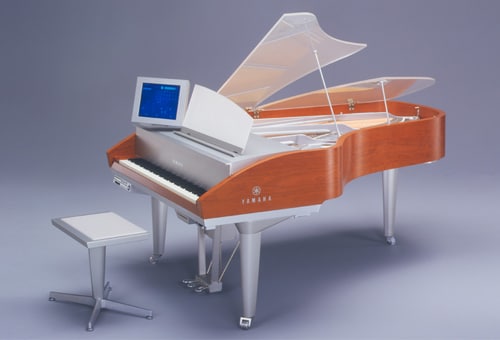
The Disklavier PRO was visually noteworthy for its clear, acrylic glass, split lid and built-in computer monitor. Indeed, the piano came with a Windows 98 PC mounted underneath the piano and connected to a touchscreen monitor that was positioned to the left of the clear music desk.
These instruments included video-synchronized performances, score-following software called Home Concert 2000 from TimeWarp Technologies, and an advanced generator that included a built-in performance mode.
Only 9 of these instruments were produced, and they were later sold for $333,000, making them Yamaha’s most expensive piano of all time.
Mark III
In 2002, Yamaha updated the Disklavier once again, introducing the Mark III standard Disklavier (available in the U1 upright and most models of grands) and the Mark III PRO, available in the C3 and larger instruments.
The Mark III control unit and interface was nearly identical to that of the Mark IIXG. In the case of the standard models, playback was improved. For the benefit of consumers who enjoyed listening with the volume turned very low, standard models were able to play more quietly than any previous standard model. The Silent system was also included on the standard models.
In the case of the Mark III PRO, the recording resolution of the pedals was doubled, enabling recording on a scale of 0-255.
The Mark III control unit included something new: a CD drive in addition to the traditional floppy drive. The purpose of the CD drive was not to record MIDI data but rather to play back audio recordings. In this context, three new features became available:
- Audio-sync Recording
This feature made it possible to play along with an audio recording and record a piano part that would be automatically synchronized on subsequent playback. - PianoSoft Plus Recordings
The CD drive was capable of playing a new type of recording called PianoSoft Plus. PianoSoft Plus recordings contained normal instrumental and/or vocal audio on the left channel and MIDI data encrypted as audio on the right channel. During playback, the Disklavier would intelligently send the left-channel audio to both the left and right speakers and decode the right-channel audio for playback by the piano itself. - Smart PianoSoft Recordings
The Smart PianoSoft feature made it possible for artists to make piano recordings that enhanced existing audios CDs. A Smart PianoSoft Recording consists of two separate recordings: a commercial audio CD and a Disklavier MIDI recording on floppy disk. Both play in perfect sync when played by the Disklavier.
Mark IV
The year 2004 saw the introduction of the Mark IV. Standard and PRO models were available on the C3 and larger grands. A high quality consumer model was available on the C2 (5’ 8”) grand and smaller pianos.
The Mark IV brought a number of technical innovations to both the standard models and the PRO. Especially noteworthy was the design change to the hammer sensors which were changed from a metal shutter to gray scale sensors, enabling continuous monitoring of hammer position.
The PRO models recorded keys, hammers, and pedals with the same extra precision as the previous PROs. For the first time, the standard and consumer models recorded the full spectrum of 127 values of the una corda and sustain pedals. The standard model additionally recorded key release velocity.
In addition to all of these technical improvements, the Disklavier feature set expanded considerably including:
- A wireless controller that connects to the Mark IV over a private wi-fi network.
- An Ethernet port that connects the Disklavier to the Internet so that it can receive streaming performances from DisklavierRadio™. This network capability also provides access to firmware and feature upgrades. (Many years later, this connectivity feature made it possible for the instrument to receive RemoteLive broadcasts from DisklavierTV™.)
- Internal, 80GB hard drive.
- UBS port for connecting USB storage media, such as flash drives.
- USB port for MIDI communications.
A few years later, Yamaha released a controller app for the Mark IV that runs on the iPhone, iPod touch, and iPad. The app provides access to the most commonly used features of the instrument.
In 2006, Yamaha introduced a peer-to-peer connectivity technology for the Mark IV called RemoteLesson. RemoteLesson makes it possible to connect up to four Mark IV and E3 Disklaviers together so that when you play any one of them, you simultaneously play the remote Disklaviers as well. Although the feature has not been released to the general public, it has been used regularly by music educators and music institutions that are active participants in the Disklavier Education Network.
E3—1st Generation
In 2006, Yamaha introduced the first generation E3 Disklavier in a single upright model (U1) and in the C2 and smaller grand pianos. Although the first generation E3 used state-of-the-art components, it was designed as a lower cost, consumer-level instrument that featured a key-sensor based recording system and an infrared, line-of-sight remote control.
The instrument included all of the primary Disklavier features that had previously become standard, including basic record & playback, video-sync recording, and Internet access to firmware and feature updates, DisklavierRadio, and (later) DisklavierTV—to name a few. A few years later, Yamaha released a controller app for iPhone, iPod touch, and iPad that provides access to nearly all of the instruments user features.
The DKC-850 Upgrade
In 2009, Yamaha began to offer an upgraded control unit for older model Disklaviers. Outwardly, the control unit is identical to the control unit of the E3, and it offers the same user features as the control unit on the E3 (which is called the DKC-800).

The DKC-850 can be used as a replacement control unit for Mark IIXG and Mark III Disklaviers, both PROs and non-PROS. It does not change the recording and playback capabilities of the sensors and solenoids in these earlier Disklaviers, but it does provide a user experience that is nearly identical to that of the E3, including connectivity for USB storage devices and access to advance features such as DisklavierRadio and DisklavierTV.
The DKC-850 can also be used as an add-on control unit for the Mark II Disklavier. In this situation, the DKC-850 connects to the Mark II control unit with MIDI cables. Other than turning on the old control unit, the Disklavier owner can ignore the old control unit and use the features of the DKC-850 to control the piano. It should be noted, however, that DisklavierRadio and DisklavierTV are not supported in this context.
E3—2nd Generation
In 2012, Yamaha replaced the Mark IV series with standard and PRO versions of the E3. The standard version (complete with hammer sensors) was made available on the C2 and smaller grand pianos. All larger pianos (from the C3 on up) were outfitted with the PRO system.
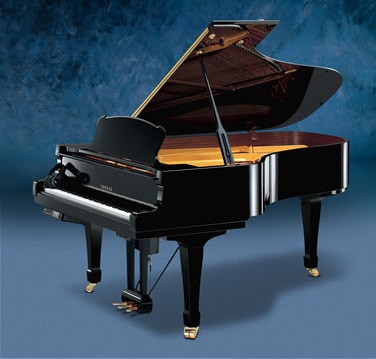
About the same time as the introduction of the second generation E3s, Yamaha introduced a new feature for the Mark IV, E3, and DKC-850 called DisklavierTV. DisklavierTV is built on a technology called RemoteLive that enables the live streaming and archiving of video, audio, and Disklavier performance data (e.g. MIDI data). By connecting a compatible Disklavier to both the Internet and to a computer, Disklavier owners can watch as well as listen to live and archived performances that are reproduced on their own piano, even performances that include instrumental and vocal audio.
The introduction of the second generation E3 coincided with the debut of a new series of grand pianos called the CX series. CX pianos are based on design principles that were previously featured on the CFX concert grand piano, an instrument that made its way to the concert stage in 2010.
CX-series pianos were the result of years of research and development. The instruments feature a thickened back frame for improved support, providing a rich and resonant tone. They include a new, revolutionary piano wire as well as hammers based on those found in the CFX concert grand.
Today, Disklavier ENSPIRE series represent Yamaha’s flagship of piano technology, combining the most advanced Disklavier system with Yamaha’s finest acoustic pianos.

